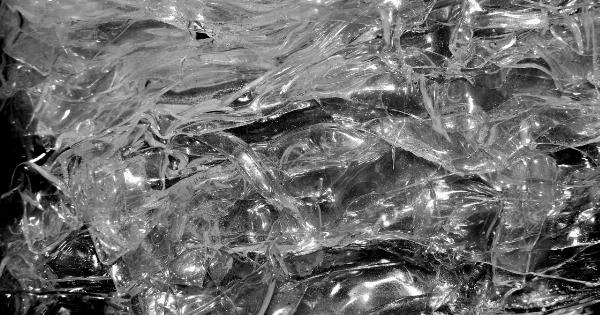White bands on the fingernails and toenails can be a cause of concern for many individuals. These bands, also known as leukonychia, can vary in appearance and may be temporary or long-lasting.
While often harmless, they can sometimes indicate an underlying health issue that may require attention. In this article, we will explore the different causes of white bands on finger and toenails and discuss when it is necessary to seek medical advice.
Nail Anatomy: Understanding the Basics
To understand what causes white bands on the nails, it’s important to have a basic understanding of nail anatomy. Nails are composed of protein called keratin, which is also found in hair and skin.
They grow from the nail matrix, a specialized area of cells located at the base of the nail. As the new cells are produced, the older cells gradually move forward, forming the nail plate that we see.
1. Leukonychia Punctata: Tiny White Spots
One common cause of white bands or spots on the nails is leukonychia punctata. These tiny white spots can appear on the nail plate and are usually the result of minor injuries to the base of the nail.
It could be caused by trauma or excessive pressure, such as forcefully tapping the nails or wearing ill-fitting shoes. Leukonychia punctata is harmless and will generally grow out as the nail grows.
2. Leukonychia Totalis: Entire Nail Bed Involvement
In rare cases, the entire nail bed can be involved, leading to a condition known as leukonychia totalis. This condition can be caused by certain underlying medical conditions, including renal failure, cirrhosis, or hypoalbuminemia.
If you notice a complete white discoloration of the entire nail bed, it is advisable to consult a healthcare professional for evaluation and proper diagnosis.
3. Nutritional Deficiencies
White bands on the nails can also be an indication of nutritional deficiencies. A lack of essential nutrients, such as zinc, iron, or protein, can affect nail health and result in white bands or spots.
If you suspect a nutrient deficiency, it is important to seek guidance from a healthcare professional who can run blood tests to identify any deficiencies and provide appropriate treatment options.
4. Fungal Infections
Fungal infections can cause various symptoms on the nails, including white bands or spots. Nail fungal infections, also known as onychomycosis, occur when fungi enter the nails through cracks or cuts and thrive in warm and moist environments.
If left untreated, fungal infections can spread, causing the nails to become thickened, discolored, and brittle. Seeking medical attention is crucial to receive appropriate antifungal treatment and prevent further complications.
5. Psoriasis
Psoriasis is a chronic autoimmune disease that affects the skin and nails. It can cause nail changes, including the formation of pitting, ridges, and white bands.
These bands usually run horizontally across the nails and can be accompanied by other symptoms, such as skin plaques and joint pain. If you suspect psoriasis may be the cause of your nail changes, consult a dermatologist for a proper diagnosis and appropriate treatment.
6. Allergic Reactions
Allergic reactions to certain medications, nail products, or other substances can also manifest as white bands on the nails. These bands may be accompanied by other symptoms, such as itching, redness, or swelling.
If you suspect an allergic reaction, it is important to identify and avoid the trigger and consult an allergist for appropriate management.
7. Liver Diseases
Liver diseases, such as hepatitis or cirrhosis, can sometimes cause white bands on the nails. These conditions affect various bodily functions, including the production of proteins essential for nail health.
Liver-related white bands are typically wider than leukonychia punctata and often appear as multiple bands across the nails. If you suspect liver disease as the cause, consult a healthcare professional for diagnosis and appropriate management.
8. Kidney Problems
White bands on the nails can also be associated with kidney problems, such as chronic renal failure. Kidney diseases can affect the blood supply and nutrient delivery to the nail matrix, resulting in nail abnormalities.
If you have kidney disease or suspect it may be the cause of your nail changes, consult a healthcare professional for further evaluation and management.
9. Trauma or Injury
Direct trauma or injury to the nails can cause white bands or spots. A heavy impact, crushing injury, or repetitive stress on the nails can lead to leukonychia. In most cases, these bands will grow out on their own as the nail grows.
However, if you notice persistent or worsening symptoms, it is advisable to seek medical advice to rule out any underlying issues.
10. Other Potential Causes
In addition to the mentioned causes, white bands on the nails can sometimes be associated with other factors such as hypothyroidism, chemotherapy, certain medications, and even rare genetic conditions.
Each individual’s case is unique, and it is important to consult a healthcare professional for an accurate diagnosis and appropriate treatment.
When to Seek Medical Advice
While many cases of white bands on the nails are harmless, it is important to be vigilant and seek medical advice in certain situations:.
- If the white bands are accompanied by other abnormal nail changes, such as thickening, discoloration, or brittleness.
- If you experience pain, swelling, or any other discomfort in the nails or surrounding areas.
- If you have an underlying medical condition, like liver or kidney disease, and notice changes in your nails.
- If the white bands persist or worsen over time.
Seeking professional guidance is crucial to determine the underlying cause and receive appropriate treatment.





























